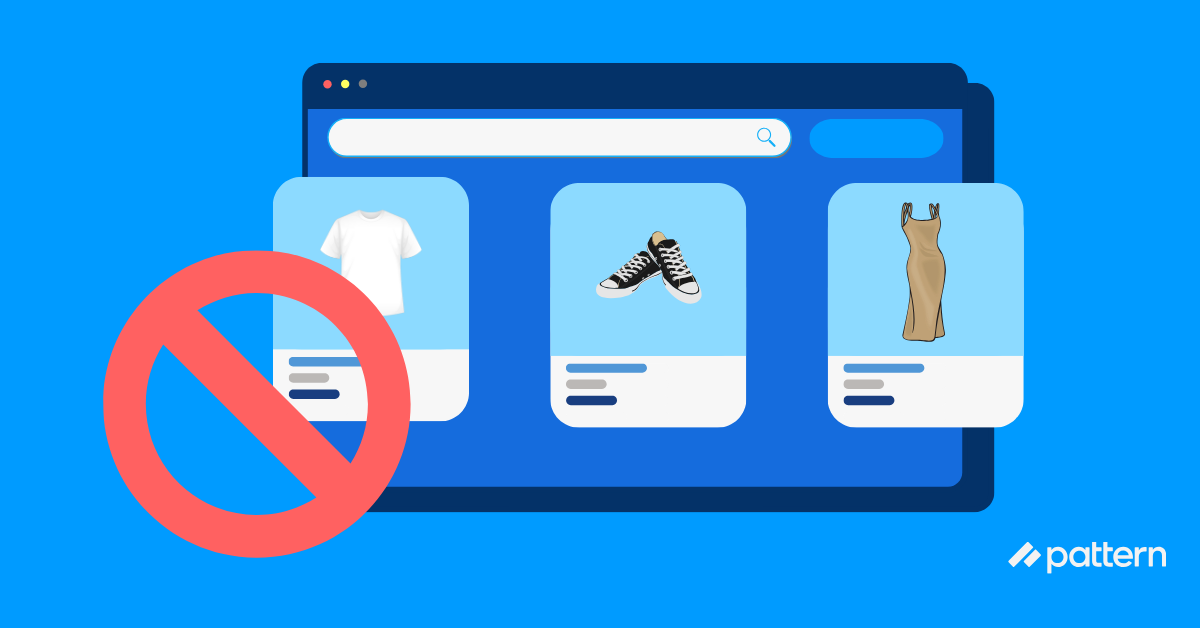Brand control is critical for Australian consumer goods businesses today. It’s needed to maintain consistency in brand messaging and to protect corporate reputation, ultimately with the goal of creating consumer confidence and trust in your product.
When a business loses control of its brand in an ecommerce environment, it opens the door for unauthorised resellers. An unauthorised seller can be any third-party reseller who does not have an official link with a brand, or a global seller selling from overseas, who lists and sells the brand’s products on a range of online marketplaces. Not only do they sell a brand’s products without authorisation, but they also may pose a challenge to a brand’s reputation and value by listing.
Unauthorised resellers leave businesses vulnerable to potential deployment of illegitimate or misleading messaging that’s inconsistent with a brand’s guidelines, as well as the risk of poor customer service that doesn’t align with the brand’s values. These actions can negatively impact a brand’s reputation and customer perception, ultimately leading to decreased trust, sales and revenue.
How can brands lose control?
Before the advent of ecommerce, many brands favoured wide distribution models across a number of brick and mortar retail stores. It was the easiest way to create awareness, get products to market at volume and increase range in stores. But wide distribution, when left unchecked in an ecommerce age, can lead to leaky distribution – allowing excess products to end up in the hands of unwanted sellers.
Today, brands that continue to operate with an undisciplined distribution strategy are often those that end up losing brand control to unauthorised resellers – damaging their brand equity and product performance.
Why? Ineffective brand control can lead to a proliferation of unauthorised resellers. Without a direct relationship with these sellers, brands cannot ensure a consistent representation of the brand. This often leads to poor reviews and erodes opportunities to build trust with future customers.
The impact to brand reputation
Unauthorised resellers undermine brand reputation. A brand may have a well-designed, highly effective website with good quality image stacks, engaging copy, and a responsive customer service arm. However, businesses can lose control of their brand entirely on other ecommerce platforms, where unauthorised sellers can represent them any way they see fit. For instance, unauthorised sellers may use low-quality images to represent a brand or no images at all. They might also provide bad, or out-of-date descriptions of brand products or very poor shipping options and customer service.
Customers who encounter how a brand is being presented by an unauthorised seller will often not differentiate between the reseller and the brand. As a result, a customer has an inferior brand experience and brand equity suffers.
How to protect your brand today
Marketplace shopping continues to grow in popularity in Australia – Pattern’s “Marketplace Consumer Trends Report – 2023,” revealing that 88% of shoppers bought from a marketplace in the previous year, and 92% of consumers plan to shop on marketplaces in the year ahead.
With this increased retail activity occurring on marketplaces today, there’s also an inevitable rise in the threat of unauthorised resellers. For large Australian and global brands, this could potentially mean large-scale damage to their brand reputation.
While tracking down unauthorised seller activity can be a highly complex and time-consuming task for brands, there are steps that can be taken. So, what actions can brands take today to protect their business and limit unauthorised reseller activity?
Measuring the scale of brand leakage
The first step is understanding where brand leakage is occurring and the scale of unauthorised reseller activity. Advanced, automated solutions like Pattern’s Ecommerce Acceleration Platform allow brands to stay abreast of how many marketplace sellers are selling its products, and who they are – the brand itself, authorised resellers or unauthorised resellers. From there the brand can also drill down to how much inventory each seller has, how many of their listings have changed and when, plus the value of an unauthorised seller’s buy box which may affect the brand or authorised seller’s own buy box position, as well as potential monthly profits. These new solutions are already being used in the market with success, having helped one global footwear brand identify an estimated $2.5 million worth of potential unauthorised marketplace sales within (or into) Australia alone.
Once a brand understands the scale of the issues it faces with unauthorised resellers, it may need to reassess and become more selective around its distribution agreements to regain brand control. This could include agreements about who is allowed to sell in which channel, how each seller must represent the brand, and how product needs to reach the consumer in a safe and saleable condition.
Taking control of a brand in a multichannel environment
The reality of today’s ecommerce environment is that almost all consumers cross shop, or research and view a brand’s product on several different marketplaces before making a purchase. In this multichannel selling environment, establishing a brand’s presence on multiple ecommerce marketplaces helps take back control of a brand on those platforms, ultimately increasing revenue and brand equity.
For a brand, this means dedicating significant resources to creating a very intentional brand experience for consumers. Establishing the same presence on all marketplaces and channels for a brand’s product guarantees customers a seamless and uniform brand experience. This can be achieved through taking a product, with its images, titles, descriptive information and branding, and publishing it across multiple retail platforms. This creates a consistent brand experience for consumers on all the sites where they can find a brand’s products online.
Understanding the challenge of brand control and taking action today
Unauthorised resellers present significant risks to brand control. When unauthorised resellers sell products without the brand’s permission it can confuse consumers and negatively impact brand perception. Unauthorised resellers may also sell counterfeit products, causing brand reputation damage and harming customer trust.
It’s critical that Australian brands understand the need to control their brands in an ecommerce age where marketplace sales activity is rapidly growing. Businesses must retake control of their brand today through strengthening their distribution process and implementing and enforcing marketplace best practice strategies.
To read more marketplace insights, Download the full ‘Australian Marketplace Consumer Trends Report – 2023’ report HERE.



